For the first time since October 2013, congressional inaction has led to a partial government shutdown. Here are four things to know about how we got here, and where we might be going.
1. Presidents can matter.
A key turning point in the progress towards a shutdown was President Trump’s racist comments about immigrants from certain countries during a White House meeting on a bipartisan Senate immigration compromise. Those remarks not only indicated that president was not, in fact, willing to sign any measure Congress sent him. They also incentivized Democrats to take a hard-line position against any short-term spending bill that didn’t include a fix for DACA, the program protecting undocumented immigrants brought to the U.S. as children.
Many political scientists push back against the “green lantern theory of the presidency”: the notion that if the president only tries hard enough, he can produce his desired policy outcome. But that doesn’t mean that the president can’t affect legislative negotiations, both positively and negatively. Indeed, there can be consequences of getting the president involved; research suggests that when the president takes a position on an issue, it can deepen the partisan conflict on the matter. This time was no different.
2. Senate Democrats largely stuck together.
When Republicans took control of the House, Senate, and presidency in January 2017, some speculated that the GOP would spend much of the year debating issues that had the potential to divide their Democratic colleagues, like infrastructure and middle class tax relief. Instead, congressional Republicans took up an agenda that focused largely on nominations and reconciliation bills—both of which only require simple majority to end debate, obviating the need for Democratic cooperation.
As a result, Democrats—especially in the Senate, where there are ten Democratic senators from states won by Trump who are up for re-election in 2018—made it through the first year of the Trump administration without significant cross-pressuring from their individual electoral needs on one hand and the party’s reputation on the other. This week’s fight, however, was ripe for this kind of conflict; the inclusion of a six-year authorization of the Children’s Health Insurance Program was meant, in part, to make it more difficult for Democrats to oppose the bill.
In the end, five Democrats—all from red states, and including four who are facing re-election this fall—voted to end debate on a stopgap bill. But six other potentially vulnerable Trump-state Democrats stuck with the rest of their party, suggesting that Republicans could have difficulty splitting their colleagues on the other side of the aisle on future votes.
3. This isn’t the 2013 shutdown.
When the government last shut down, in October 2013, it was precipitated by Republican efforts to undermine the Affordable Care Act. While a handful of Democrats supported one or more of the various measures that would have kept the government open while making changes to ACA, the party as a whole remained committed to preserving the law. This year, however, the major substantive issue driving the shutdown—a DACA fix—is something that some members of both parties want to see in some form. In addition to the bipartisan group led by Senator Lindsey Graham (R-S.C.) and Senator Dick Durbin (D-Ill.), the “number two” leaders in both chambers have been negotiating a proposal. Add in the plan offered by Republican Rep. Will Hurd (R-Tex.) and Democratic Rep. Pete Aguilar (D-Calif.), and the 34 House Republicans who sent Speaker Paul Ryan a letter calling for a resolution of the DACA issue in December, and it’s clear that the policy question at the heart of this shutdown is one that some members of both parties actually want to address. That bipartisan interest, however, is coupled with strong opposition to a fix among some Republicans, making this a difficult needle to thread.
4. Reopening the government could be a heavy lift.
Because one of the major causes of this shutdown is a substantive policy issue, resolving it may well require a DACA measure that can actually pass both chambers and be signed by the president. Such a bill does not appear to exist yet, and it’s unclear how much time congressional leaders need to produce one—if it’s possible at all.
A second significant source of conflict between Republicans and Democrats is over the aggregate spending levels for both defense and non-defense programs for the rest of the fiscal year. Since 2011, that spending has been subject to limits, and Democrats have been insisting that any increase in those caps on the defense side of the budget be matched on the non-defense side of the ledger.
This conflict is not new. Indeed, Congress raised the limits in December 2013, roughly two months after re-opening the government after the last shutdown. That year, however, legislators could more easily afford to separate the budget cap issue from the rest of the debate. It was earlier in the fiscal year, giving members more time to come to an agreement. In addition, objections from defense hawks, like Senator Lindsey Graham (R-S.C.) and members of the House Armed Services Committees, to continued short-term spending bills have made it harder for Republican leaders to keep their own team onboard this year. A route out of the shutdown, then, may well require a deal on the spending caps as well as on immigration.
Where do we go from here? One possibility is that Congress—as they did in 2013—relies on the looming need to increase the debt limit as an action-forcing mechanism to resolve the crisis. But with the date by which the ceiling must be raised currently estimated to be in mid-March, it’s not clear that would be an effective cudgel. The challenge is big, especially for a Congress that has had trouble solving hard problems in recent months and years.
The Brookings Institution is committed to quality, independence, and impact.
We are supported by a diverse array of funders. In line with our values and policies, each Brookings publication represents the sole views of its author(s).
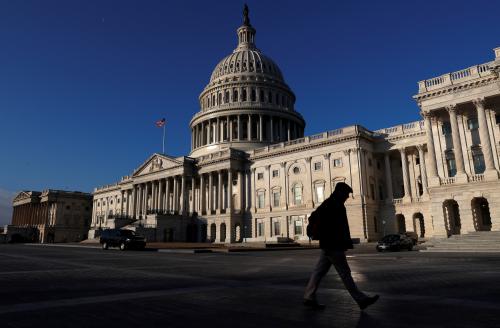
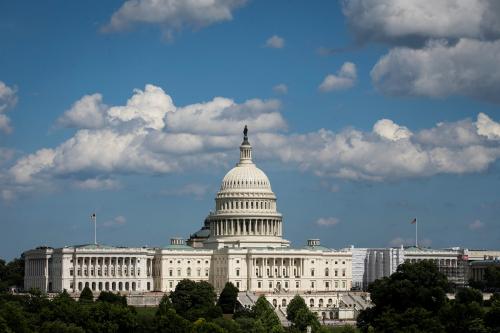
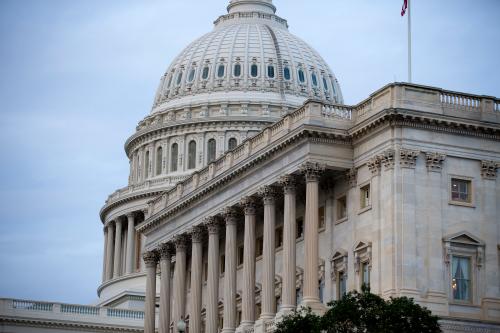

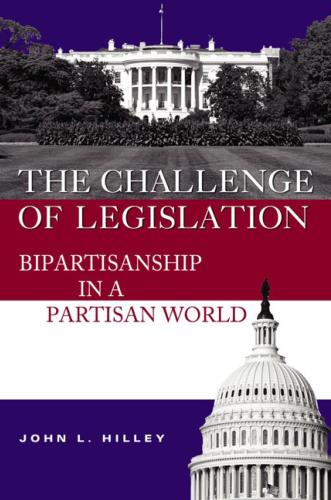


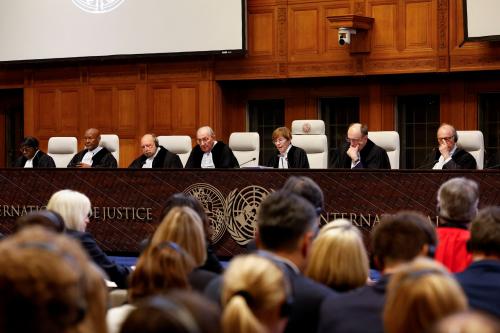
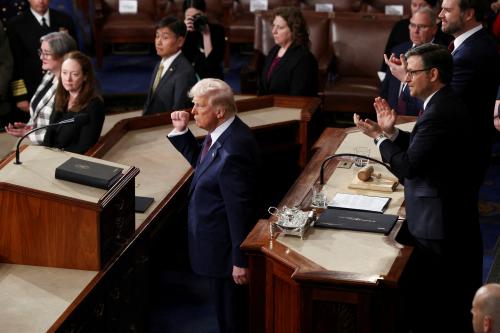

Commentary
The 2018 shutdown: Reopening the government will be a heavy lift
January 20, 2018